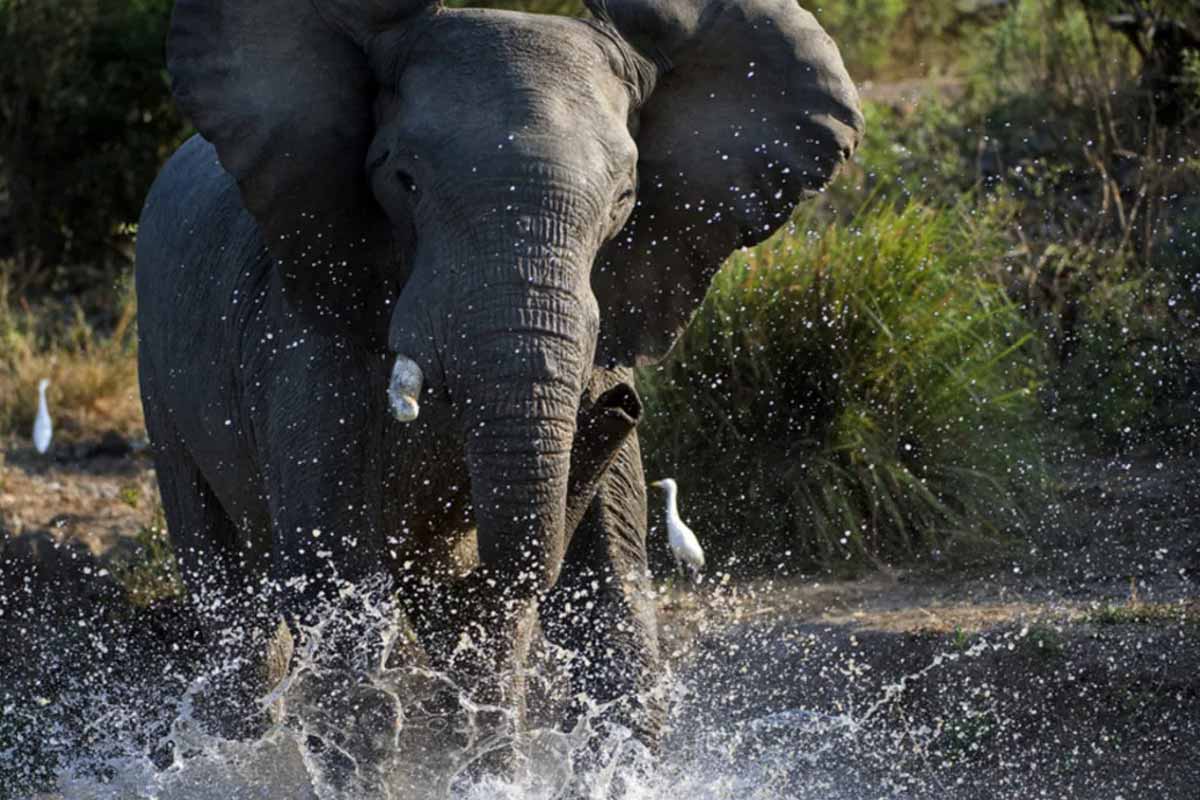A pause, a raised trunk, and a hush across the road. The moment lands softly, yet it stays. A short clip shared by Wildlife Rescuers shows a herd moving together, steady and calm. Then something tender happens at the end, and hearts shift. A elephant seems to offer thanks before fading into cover. The scene feels simple, yet it carries weight. People watch, breathe out, and remember why patience matters.
A quiet wave that turns a roadside wait into wonder
Engines idle while adults, babies, and small toddlers step forward, then pass. Ears fan gently. Trunks brush the air. People sit still, because safety comes first and awe soon follows. One animal lingers, then turns slightly, as if to greet the line of cars. The road holds the silence.
Wildlife Rescuers called it “a quiet, touching moment of respect and gratitude.” The words fit because the gesture feels sincere, not staged. It reads as calm, not fear. The elephant signals and then vanishes into cover. Passengers exhale. Drivers rethink speed. A simple stop becomes a memory with roots.
The clip moves fast, yet it stays with you later. The herd flows like water across a narrow bend. Older bodies shield smaller frames while feet find cool tar. People capture the scene, yet they keep space. The lane turns into a path, then a story shared at home.
How the elephant matriarch leads and keeps the group safe
Every matriarch carries maps in her head. She chooses where to walk, when to pause, and how to cross. Food matters, water matters, safe paths matter more. Because risk changes fast near roads, she reads scent, sound, and wind. Her job is steady judgment under pressure.
Families in these groups are close. Females stay together with their calves. They share care because shared care saves time and lives. Young males, once they reach adolescence, leave the group. They live alone for a while or join bachelor bands. The line shifts, yet the rule remains.
Crossings follow simple steps. The front scans first. The rest move, then tighten. Adults slow the pace so calves can keep up, and the back closes ranks. Trucks may wait, so drivers help too. One elephant hesitates, confirms the opening, and then guides the final pair through.
Bonds, baby care, and the language of low rumbles
These animals touch often because touch speaks. Trunks rest on shoulders. Heads lean for a second, then move on. Calves gain courage from that contact, so they step with more balance. When trouble nears, bodies shift to shield, and the smallest stand inside a living ring.
Sound also travels underfoot. Low rumbles move through air and soil, and feet feel it. Messages carry far, while voices stay quiet near people. That calm tone matters by roads. The group keeps stress low, because calm travel lowers risk. A elephant hears the cue, then follows the line.
Memory ties it together. The matriarch keeps a mental list of paths, pools, and dry places. Old droughts teach lessons that return years later. Those lessons guide speed, spacing, and rest. Calves watch and learn because learning keeps families whole. Tomorrow’s leaders walk beside today’s guide.
Numbers, splits, and why one old bull may join
Group size changes with land, season, and food. According to Elephant Guide, a herd can grow near one hundred. Several females stand with many calves, while only one older bull sometimes joins. When the crowd gets large, leaders may split it into smaller “units” that still stay linked.
Those splits help movement near narrow places, like bridges or bends. Smaller units choose staggered times, so stress stays low. They use the same route, yet they avoid jams. The trick lies in timing and trust. A elephant unit flows past, then the next moves when the path clears.
Wildlife Rescuers described the road scene as respectful on both sides. That respect reduces panic and damage. People give space. Animals keep pace. The exchange runs like a soft handshake at distance. The thanks at the end seals it. The memory sticks because cooperation leaves a mark.
Safer roads, calmer drivers, and respectful space for elephant families
Small actions help a lot. Drivers slow early and keep lights down. Windows stay up, because noise travels. Engines idle quietly, then switch off when it feels safe. Honks add fear, so no one uses them. People remain inside cars and let trained teams manage the line.
Road design also matters. Wildlife signs work when placed with care. Speed cushions do more when traffic climbs. Clear shoulders help herds step off quickly, while simple barriers guide feet away from deep ditches. Rangers share routes with local groups. Then drivers learn patterns and plan better trips.
Communities can support corridors that link water and feeding zones. Simple posts and clean verges encourage safe strides. Schools share the story, so kids know why patience wins. Tour guides repeat it, so visitors act well too. One elephant gesture teaches a larger rule: kindness moves both ways.
Why a small pause can reshape how people behave
A raised trunk looks tiny on a screen, yet it travels. Viewers share it, then adjust how they drive. The herd keeps its rhythm, and the road keeps its calm. One elephant turned stillness into meaning, and people met that meaning with care. That is how respect grows.
